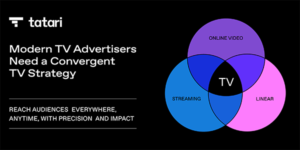Public Relations – not advertising – is the weapon of choice for top brands
Interbrand, a leading London-based consultancy and marketing research firm, has named the recipient of its Brand of the Year survey. In a landslide, the winner is – public relations.Actually, Google was the brand of the year according to 1,317 respondents but PR – not advertising – is the clear tactic of choice for building top brands.
Compare the Top 5 Brands on Interbrand’s list versus the Ad Age Top 5 Advertisers. Even though the Top 5 Advertisers spend billions annually to support their brands, no company or product is among the Top 5 Brands. In fact, Coca Cola (#32 Top advertiser) is the only member of the brand list to also be among the top 100 in advertising.

How can this be so? Isn’t advertising the way to build brands? Apparently not. Google does almost no advertising, but is frequently featured in business magazines and the general press, which carries tremendous credibility. The same is true for Apple, Starbucks and Ikea who are also relatively light purchasers of advertising but heavy proponents of PR.
| Top 5 Brands | Top 5 Advertisers |
| 1. Google | 1. General Motors ($3.3B) |
| 2. Apple | 2. Proctor & Gamble ($2.5B) |
| 3. Coca-Cola | 3. Ford ($2.4B) |
| 4. Starbucks | 4. PepsiCo ($2.2B) |
| 5. Ikea | 5. Pfizer ($2.1B) |
![]()
According to Al Reis, author of The Fall of Advertising and the Rise of PR, PR creates brands. Advertising defends brands. The data from leading brands supports this position. Reis, for example, points out that in its first 10 years, Starbucks spent less than $10 million total on advertising.
Howard Schultz, the chairman and founder of Starbucks says, “I look at the money spent on advertising, and it surprises me that people still believe they are getting returns on their investments.”
A lesson for Professional and Tech Services
Professional and technology services firms should take heed, particularly when weighing an ad push versus a targeted PR campaign. There are three simple reasons why.
- Credibility – Advertising, no matter how clever, funny, dramatic or aesthetically pleasing is self-serving. It is a pitch and no matter how cleverly disguised, we all recognize advertising as a pitch. PR, on the other hand, has gone through a filtering process. That is, an editor or reporter has deemed the information credible and newsworthy. While we may not love the media, we recognize that they do filter pap from news in most instances. What PR lacks in control it gains in credibility.
- Clarity – Advertising uses subtleties, claims, and comparisons, and borrows from the arts and psychology to try to influence decisions. PR usually translates into simple messages. A problem has been solved. New conclusions have been reached. Someone or something has created a new approach. The more straightforward and relevant the information, the greater the possibility of it becoming news. PR is based in information, not seduction.
- Cost – There is no company on the planet spending a billion dollars a year on PR. In advertising, there are more than 25. There is no comparison in costs. Or, many would argue, in effectiveness.
In constructing marketing programs, they key is to establish expertise in a specific discipline, and make that expertise known to potential buyers and thought leaders through credible third parties. PR is better than any marketing tool at your disposal, including advertising, to accomplish this goal — something the stewards of the best brands in the world already know.


